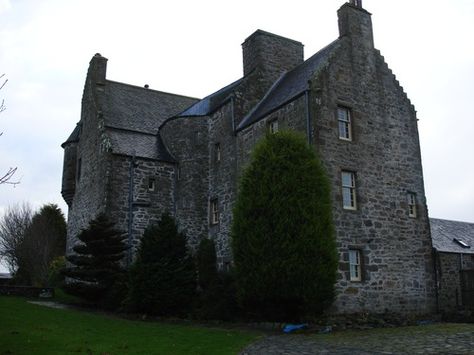
John and Hazel Hunter installed two ground source heat pumps in autumn 2009. They own a Tower House in Central Scotland, which presented some challenges to the project, partly because of its location but also because of the fact that it is an A listed building. An A listed building is roughly equivalent to a Grade 1 listed building in England, so you can imagine that integrating modern heat pump technology into the historic building in a sympathetic way that kept them on the right side of the authorities was a tall order.
The project was a great success and exceeded their expectations in terms of practicality and cost.
Table of Contents
Project Details
The property is a detached tower house in central Scotland and the pre-existing heating system ran on LPG. Several options were considered for the new heating system, some of which were ruled out very early on after initial feasibility assessment. The replacement heating system would be powered by two IVT HT Plus E11 ground source heat pumps and the heat would be distrubuted via radiators.
The project began in September 2009 and was completed by November 2009, a period of three months.
The couple applied for Renewable Heat Incentive (RHI) benefit and the payment levels vastly exceeded their expectations.
Why Heat Pumps?
John and Hazel decided to look at alternative ways to heat their property because the price of LPG was on the rise. An air source heat pump could have done the job but, one evening, sitting in front of the television, they saw a property very similar to their own on the Channel 4 programme Grand Designs. Kevin McCloud was waxing lyrical about the merits of the project, but by far the most interesting aspect to the Hunters was the heating system, which comprised ground source heat pumps.
The Installation Process
The installation process took quite a long time – almost three months, partly due to problems with the ground works.
The installation required more than 1,400m of 40mm pipes, 100m of which had to be lagged with insulation material and be buried a metre deep below the surface.
The house sits immediately on top of a rocky outcrop so getting to a depth of a metre required digging through the underlying bedrock at points. Although there was no convenient body of water to allow installation of a water source heat pump, fortunately, the rock below the property was shale bearing sedimentary rock, which was easily removed with a mechanical digger.
Once the pipes had been laid below ground, the LPG boiler was removed and the new heat pump system was retrofitted to the old pipes and radiators.
The Result
Living with the new heat pump
The couple are very satisfied with their new heating system. Despite a few teething problems caused by dirt getting into the system, which were quickly resolved, things are now running smoothly.
There have been three breakdowns but due to the fact that they have two separate pumps controlled by a step controller, they have never been left without heating. This is a concept called redundancy, which means there is always a backup available.
Renewable Heat Incentive
The Hunters applied for the RHI payments, a process that they found very straightforward, except for the unforgiving nature of the Ofgem website and the somewhat bureaucratic nature of the process, particularly the rigid interpretation of the SPS calculation.
However, it was all worthwhile because the level of payment they will receive has exceeded their expectations hugely.
Impact on Heating Costs
The heating bill for the couple halved overnight. The cost of the excavations was considerable due to the need to dig through bedrock, coming in at around £35,000, however, the payback period of this initial investment is just 10 years, even without taking the RHI payments into account.
Benefits of Ground Source Heat Pumps
The cost benefits speak for themselves – who wouldn’t enjoy having their heating bills halved at a stroke? Yet that’s exactly what the Hunters have had happen to them.
The house is warm all the time the heating is running, which is the case for around 9 months of the year. The system also has an auto-adjustment feature to account for times when the outside temperature is particularly cold.
Due to the colder climate in Scotland compared to other parts of the UK, a water source heat pump can sometimes be a good choice, as has been proposed near the River Tay, but the ground source system installed by the Hunters is doing fantastically well and there seems no reason to change.